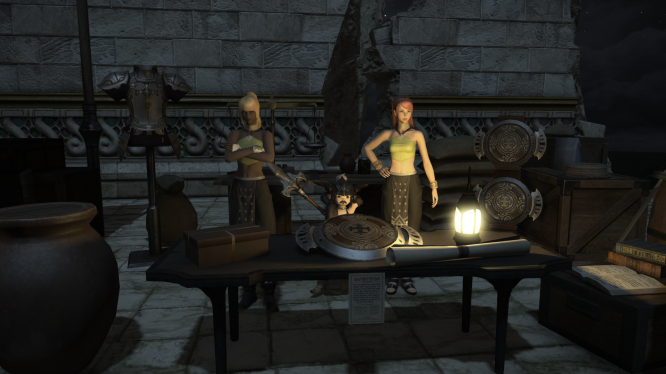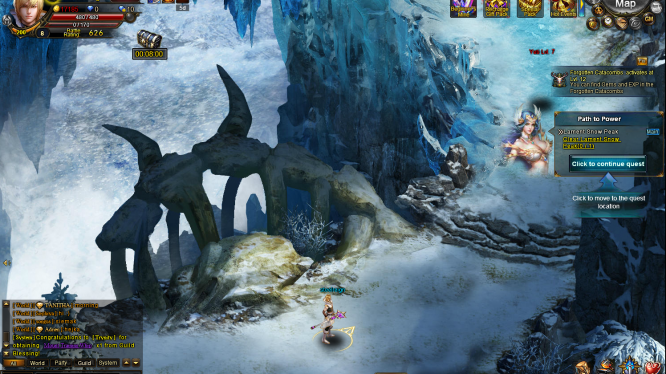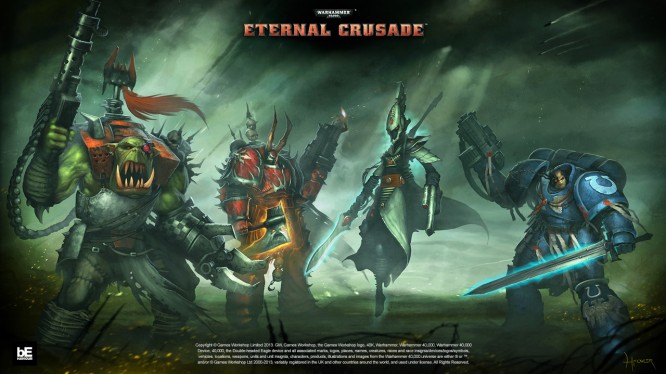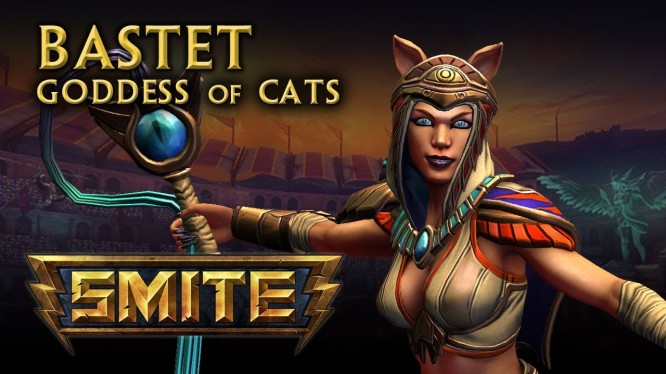

Beware all before you read. This is a tremendous lore dump, and as such will contain spoilers. I’d love to have everyone read it and weigh in, but you may find some information here you’re not ready for yet.
—————————————-
Being a roleplayer gives the world of an MMO new meaning. One has to consider each and every action that your character takes, even if it’s just to say “well, this isn’t in character at all.” This is easily accomplished when your character’s alone and has no interactions with anyone else. However, sometimes that option’s not available. FFXIV roleplayers have to deal with this more regularly than others, given the significant amount of crossover in our gaming world with others. Today, we take a look at what these crossovers mean to the storytellers of Eorzea.
The world of Hydaelyn seems to be one rife for crossovers with other parts of Square Enix’s catalog. As of this article, five points of crossover exist. One is a tongue-in-cheek event depicting Dragon Quest X, and is honestly a silly, light-hearted romp through the fields around Ul’dah to get pig masks, pets and fun hats.
Never let it be said that FFXIV dislikes fun hats.
The second to be dealt with is an event depicting Shantotto, a core NPC from Final Fantasy XI. Shantotto is a Tarutaru, a race of short magic-wielders whose analogue in FFXIV is the Lalafell race. Shantotto presents a significant threat to the Twelveswood and her peoples, but the matter is swiftly resolved (by the mage herself appearing in Gridania proper) and she leaves after presenting the player with a wind-up version of herself. The third event is that of Lightning Strikes, where the main heroine of Final Fantasy XIII shows up to assist the player in certain FATEs. Thematically this is the most entertaining of the three events, as the actual character of Lightning is running around the FATEs, joining in on the carnage with the rest of the players.
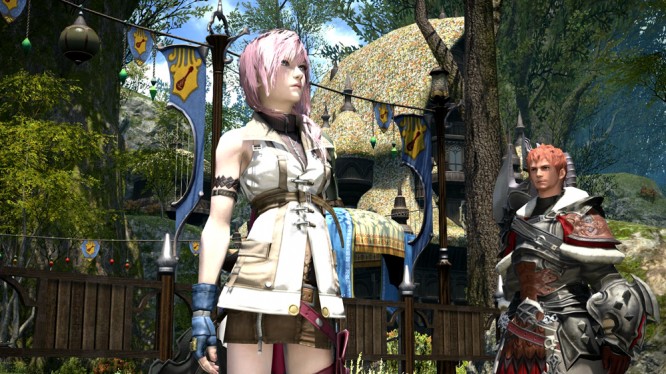
Hello again, Lightning. You’re starting to become familiar here.
The fourth is easily explained within the lore of Final Fantasy itself. Gilgamesh, a recurring boss that has moved between multiple Final Fantasy worlds, exists in FFXIV. His boss fight is actually quite similar to the boss fight against him in Final Fantasy V, and happens during a storyline which is ridiculous even for the standards of side stories in FFXIV, though it does show off the new facial motion capture quite spectacularly. As far as Gilgamesh is concerned, he is specifically stated to be a warrior who crosses dimensions. His existence here is the same as his existence in any other Final Fantasy. He seeks strong warriors and rivals to test his capacity as a warrior. He doesn’t violate any tenants of Final Fantasy in his arrival, and his boss fight is just fun. There are greater threats to consistent lore than Gilgamesh though; namely, the Crystal Tower.
The Crystal Tower exists as a wholesale reference to Final Fantasy III. The characters within it are major bosses and antagonists to the characters of that game, and the tower’s existence plays a tremendous part in the core story of FFXIV. The main antagonist of FFIII, Xande, is the final boss of Syrcus Tower. Two allies, Doga and Unei, are also allies in FFIII – and both fall to the ultimate threat of that game, the Cloud of Darkness. By the end of Syrcus Tower, the second section of the Crystal Tower, the story has even had an effect on Eorzea by the loss of Nero tol Scaeva to the aforementioned Cloud of Darkness. The loss of a major villain is no small impact upon a game’s plotline, and with that loss, the existence of the Crystal Tower is impossible to ignore in the canon of the game.
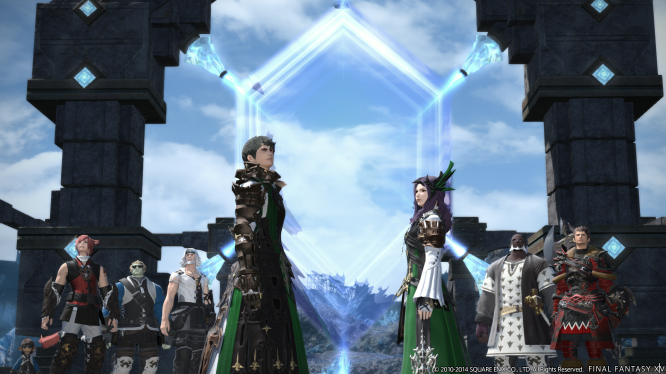
You guys don’t look much like you…
So what else do we, the storytellers and roleplayers, have to account for?
This is where theory comes into play. Every roleplayer must interpret the game’s story differently. The concept of “death of the author” is one that is integral to a roleplayer’s experience – the idea that the author’s experience of the story is no more or less important than the reader’s. However, interpretation must be made in one way or another. One cannot remain in these worlds and watch these events come to pass without making some sort of determination on them.
A similar problem often arises when dealing with final bosses. Does everyone fight the final boss? Does only your party? My approach in the Praetorium was to have my character as one of many strike teams that went into the Praetorium when the time came, and have him be one of those who finally faced off against the greatest threats within. Others will take their own approach, and that is well and good as long as it does not conflict with other players. For example, I don’t believe I could fairly say my character can take on the Ultima Weapon by himself. He can’t take on a single Primal alone, how could he fight three of them combined? As one of many though, he can be part of the force that helped to bring it down.
We must make determinations on how the plotlines intertwine with each other, and in a game with such a wide variety of points it draws upon, that can become difficult. Clearly, our characters don’t know anything about the worlds of other games. However, that doesn’t necessarily mean they can’t. I for one am open to dimensional traveler styled characters, because they already exist within the actual game storyline. Why could a player not be one? After all, a fair amount of our player cast literally disappeared into the wind for five years, and then got all spat out onto the world again. If we can move through time, why not space as well?
A popular theory is that the world of Final Fantasy XIV is also the world of Final Fantasy III and V, and its history is filled with the events of those two games. Square Enix has made no comment one way or another on the matter, and so the players must take their assumptions and hope they’re correct on it. Is this overthinking the situation? Probably. This all was most likely meant as simple reference and homage, especially the three FATE-based events. However, to enter a world with the depth of a roleplayer is to innately over-think. It has its own fun.
So think, my friends. Consider the world we all share. I personally believe that whatever universe Hydaelyn exists in has weak dimensional barriers, and as such people can come and maybe even go as they see it fit to do so. Therefore, the crossovers are to be considered canon and treated as such. This is how I roleplay. Hell, my character Garen is currently having a bit of a fanboy moment as he rants and raves over Lightning’s return.
It’s all in how you enjoy the game. After I get done with my roleplay, I’ll probably go punch Gilgamesh again, because the fight is a lot of fun and makes a lot of great references. Sometimes writing these articles can spur on what you do within the game.
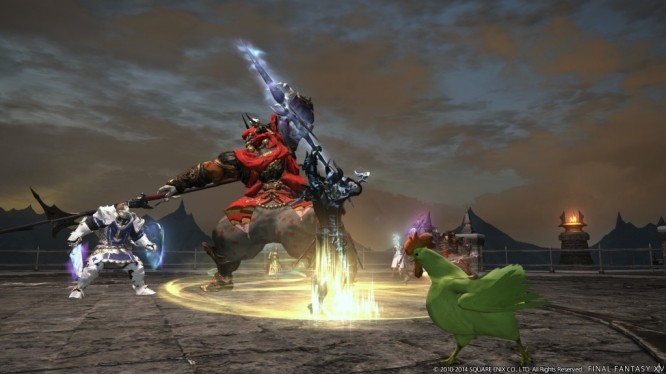
Seriously, it’s one of the most fun fights in the game. Go play it. Again.
I leave you all with a question. What are your views and opinions about the nature of Hydaelyn? Leave a comment and let’s start a discussion. Until next time!
